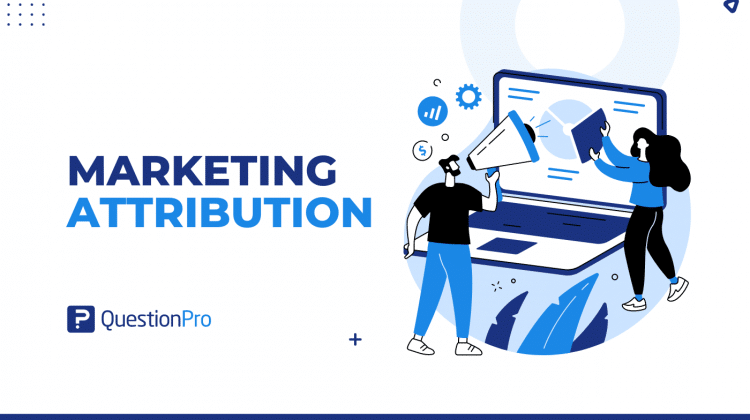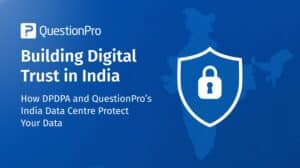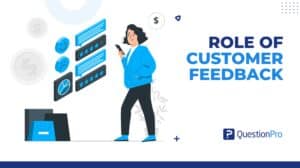
With a website, social media sites, influencer programs, offline encounters, and other touchpoints to consider, marketing attribution only becomes more difficult as your company grows. It gets much more difficult as customer behavior changes with the times.
Even though it’s not an exact science, you can make smarter business judgments the more such data you can see in the customer journey. But what exactly is marketing attribution? How can you use this information to improve your business strategy? Continue reading or jump to the part you want:
What is marketing attribution?
Marketing attribution is discovering how each marketing touchpoint affects a customer’s choice to buy. Attribution seeks to identify the most influential channels and messages in convincing a customer to do the desired action, such as making a purchase.
The phrase “marketing attribution” refers to the process via which businesses identify the specific marketing efforts and consumer interactions that result in revenue.
Using these KPIs, you can pinpoint which channels and content produce the most engaged audiences and conversions. Customers’ actions and conversion rates are modeled at various marketing cycle stages.
Multi-touch attribution, lift studies, temporal decay, and many other attribution models are used by marketers. As a result of the insights provided by these models, marketing teams are better able to tailor their efforts to the preferences of individual consumers and increase their return on investment (ROI).
Importance of marketing attribution
Marketing attribution is important for brands because it helps them determine how well their efforts work. Enhanced marketing attribution programs need marketing teams to collect and standardize customer data from different platforms to give each interaction the right amount of weight.
For example, if a customer sees a display ad and an email campaign but only makes a purchase after seeing a special offer in the email, marketers can say that this piece of collateral was more important than the display ad in making the sale. Then, they can spend more time and money making targeted email ads.
To get the level of detail in the data needed for successful attribution, marketing teams need advanced analytics platforms that can quickly and accurately turn big data into person-level insights that can be used to improve campaigns while they are running.
By correctly tracking and attributing customer journeys, brands can put money into the channels that drive sales and figure out where their current campaigns need to catch up. Also, marketers can use attribution data to learn more about their customer base and make more relevant strategies.
Ultimately, marketing attribution helps brands get the most out of their marketing investments and maximize their projects’ return on investment (ROI).
How is marketing attribution measured?
Marketing attribution, the discipline of unraveling the rich tapestry of consumer interactions and allocating credit to the different strands that lead to a desired outcome, is a fascinating process that involves data analysis, modeling approaches, and strategic insights. A good weaver meticulously builds a narrative that shows the genuine impact of each marketing touchpoint when measuring marketing attribution.
Marketing attribution measurement begins with collecting a rich tapestry of data from consumer interactions across many channels. Each thread is a unique touchpoint, such as a fascinating display ad, an engaging social media post, or a targeted email campaign. A whole tapestry of client journeys is created from these threads.
Once this tapestry is woven, the master weaver chooses the correct attribution model based on corporate goals and objectives. Like varied weaving patterns, each model gives a different view of how to credit the tapestry’s threads.
After setting the loom, the weaving begins. The weaver observes the tapestry’s threads, touchpoints, and interactions. They expertly assign credit to the strands that affected the desired conclusion. Mathematical algorithms or the weaver’s experience may be used to generate a balanced and insightful picture of marketing influence.
As the tapestry develops, the weaver reveals astonishing insights and surprises. Reports and infographics illustrate each thread’s genuine contribution. Executives and marketers marvel at the patterns and touchpoints that leave an indelible impact on customer behavior.
However, this masterpiece evolves. Marketing attribution measurement is a living art that changes with customer behavior and marketing initiatives. The weaver constantly adapts and refines the attribution model to capture the richness and nuance of changing client experiences.
Marketing attribution measurement is a beautiful tapestry that illuminates marketing effectiveness. It helps organizations to make informed decisions, allocate resources wisely, and optimize their plans for success. It is an art form that turns data into wisdom and leads marketers on a research trip to uncover customer interaction secrets.
Challenges of marketing attribution
Most marketers think they will need help to make a perfect attribution model that helps them decide what to do.
Here are five problems that can lead to unreliable data models or the end of a project:
- Cross-channel management
This is a common problem for corporate marketers that need to coordinate the efforts of many people working on different websites, channels, and projects. The transition from a campaign micro-site to the main domain can be reliably tracked with analytics tagging and system settings.
Another possibility is that the prospect’s journey from your website to your storefront, where they will complete the purchase, will not be recorded.
- Decisions based on small sample sizes
Smaller websites may not have enough visitors for marketers to use their attribution data to draw meaningful correlations for future efforts. Because of this, incorrect predictions are drawn, and successes cannot be duplicated.
- Lack of tracking compliance
It may be necessary to manually import data or keep track of sales activities if your attribution models depend on offline actions.
From my experience overseeing hundreds of CRM implementations, there is always some non-compliance in logging activities (like calls, meetings, or emails). This leads to skewed attribution models.
Mo‘ models, mo’ problems: Each analytics platform has a set of five or more attribution models you can use to optimize your campaigns.
Without a clear understanding of the pros and cons of each model, the person building the attribution reporting may not be structuring or configuring them to align with your organizational goals.
- Data privacy
Analytics data has become increasingly hazy every year since GDPR, CCPA, and other privacy rules were implemented.
Due to the impossibility of pulling in the search for every touchpoint, attribution modeling needs to be improved for businesses that rely on website visitors opting into tracking.
Types of marketing attribution models
As you’ve probably noticed, marketing attribution may get complicated, but it doesn’t necessarily need to meet your brand’s needs. The right marketing plan can be selected with the help of attribution models.
There are both single-source and multi-touch attribution models. While multi-touch models provide credit to all contributing channels, single-source models only give credit to one touchpoint.
Let’s start with single-source attribution models.
- First-touch attribution
This single-source model gives all the credit to the first time a customer interacts with your brand. They may visit your website, read your content, or interact with your brand for the first time. This digital marketing plan attribution method would give credit to the first Instagram post where a customer saw a brand when it came to social media marketing.
It’s straightforward to understand and apply. However, it doesn’t show lower-funnel touchpoints.
The first-touch attribution model is best for demand generation and lead forms.
LEARN ABOUT: Test Market Demand
- Last-touch attribution
The last-touch attribution methodology credits the final touchpoint that leads to a sale. No consumer contacts are considered. It’s fantastic because of its simplicity and ease of use, but it needs to trace the engagements that initially led customers to your business.
If conversions are your goal, employ the last-touch attribution methodology.
- Linear attribution
Like linear attribution, multi-touch attribution models incorporate all contributing channels throughout the customer lifecycle, unlike single-source attribution models. In the linear attribution paradigm, each touchpoint is given equal credit. It provides a complete view of client interactions. However, this methodology does not evaluate engagement priority because not all interactions are equal.
When your touchpoints are relatively equal in regard to your aim, apply the linear attribution approach.
- Lead-conversion touch attribution
Lead-conversion touch attribution is about the touchpoint that created the lead. The flip of the switch motivates consumers. It helps identify lead-generation moments but needs the perspective of other marketing touchpoints.
The lead-conversation touch attribution approach is best for finding and optimizing your brand’s best channels.
- Time-decay attribution
Time-decay attribution weights purchase funnel touchpoints differently than the linear attribution model, giving more credit to recent encounters. This helps identify which channels influence customers to buy but assumes that subsequent touchpoints have a greater impact.
The time-decay attribution method works best for business-to-business marketing with longer sales cycles.
- Position-based attribution
Position-based attribution, also called “U-shaped attribution,” is the most advanced method. It places the most weight on the first point of contact, at 40%, the moment just before conversion, at 40%, and all other touchpoints combined, at 20%. It’s useful for optimizing not one but two experiences, however, it could overvalue some details.
When you need to know the large picture but are also interested in the details of individual touchpoints, the position-based attribution approach is the way to go.
- Custom attribution
The custom attribution model is the most complicated but also the most customized. Marketers can add attribution weights to each touchpoint. They have room to adapt the model based on factors like market segment, distribution routes, and consumer preferences. It’s accurate and complex, but it’s hard to set up and requires a lot of experience.
The bespoke attribution model is optimal if you have the time and knowledge.
Marketing Attribution Models: How to use them
Determine how different marketing touchpoints and channels contributed to the success of a campaign or customer conversion by using marketing attribution models. Take into account the following tactics to properly use marketing attribution models:
- Do some market and industry research for your product.
- Make sure the attribution models you choose to address questions from potential executives about how marketing will assist produce customers, which campaigns work best for conversions for your type of organization, and where to spend money most effectively.
- Always run tests on your attribution models because both advertising and goals are prone to change.
- To track your consumer touchpoints, make an investment in marketing attribution tools.
Conclusion
Marketing attribution is a very important process that helps businesses figure out how their marketing efforts affect their business and make smart decisions. By measuring and giving credit to different touchpoints, companies can improve their strategies, use their resources more wisely, and improve their customers’ experiences.
QuestionPro can be a great help in this area. QuestionPro’s powerful survey and data analytics tools let businesses get customer feedback, keep track of contacts, and find insights that help with the attribution process.
Using QuestionPro’s powerful platform, businesses can confidently handle the complicated world of marketing attribution and learn more about the factors contributing to their success.







